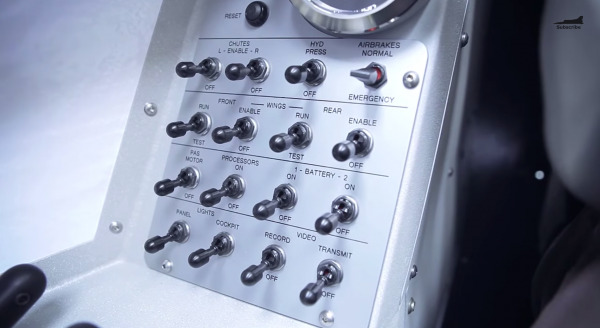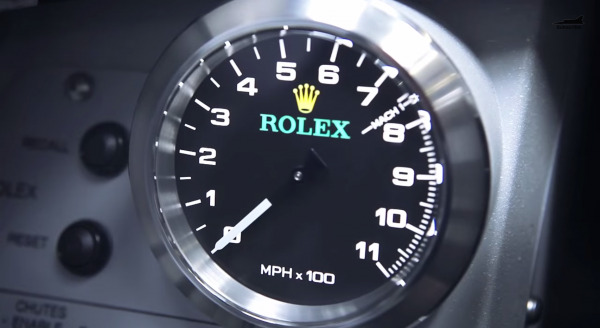This Is What The Dashboard Of A 1,000 Mph Car Looks Like
When the car you're driving is covering a mile in just 3.6 seconds, there's no time for SiriusXM. World Land Speed Record contender Andy Green has been showing off his own jet-propelled supercar, Bloodhound SSC, with a glimpse into the custom-crafted cockpit of the 1,000 mph monster. As the video after the cut demonstrates, it's more like something you'd expect to find in a SpaceX capsule than a race car.
That's because most race cars aren't powered by a combination of jet engines and rockets, which Bloodhound will rely upon to hopefully set a new record for the fastest car on the planet.
The dashboard is split into sections, each relating to a different aspect of the car's construction. The right side is focused on the methods of getting up to speed, with details on the three engines – two Nammo hybrid rockets, and an EJ200 jet engine – such as their fuel levels, current temperatures, and pressures. Easily-flicked toggle switches are the order of things, so that Green needn't be too distracted from the titanium steering wheel.

Controls and displays on the left, meanwhile, handle the equally-important "slowing down" part of the car. Bloodhound uses a mixture of hydraulic brakes and airbrakes to slow from 1,000 mph down to a standstill again.
Finally, in the middle there's a central display with the big numbers on it: speed – both in miles-per-hour like a regular car, and by Mach number – and the output levels of the engine trio. Together, they can push out 135,000 thrust HP, the Bloodhound team says (or, the equivalent of 180 F1 racing cars).

Since a systems meltdown isn't going to help jet pilot turned land-speed record breaker Green mid-attempt, there are also more traditional analog instruments as backups. These have been specially created by watch firm Rolex, with the timepiece company building a speedometer that can handle rates up to 1,100 mph, and a precision chronograph with an integrated stopwatch that Green could use to manually time the various cooling and braking processes if the digital systems throw up an error.
The current record is 763 mph, and held by Green himself, set in the Thrust SSC car back in 1997. Just breaking the speed of sound, the car used two huge Rolls-Royce jet engines, more commonly found powering civilian aircraft.
VIA Autoblog
